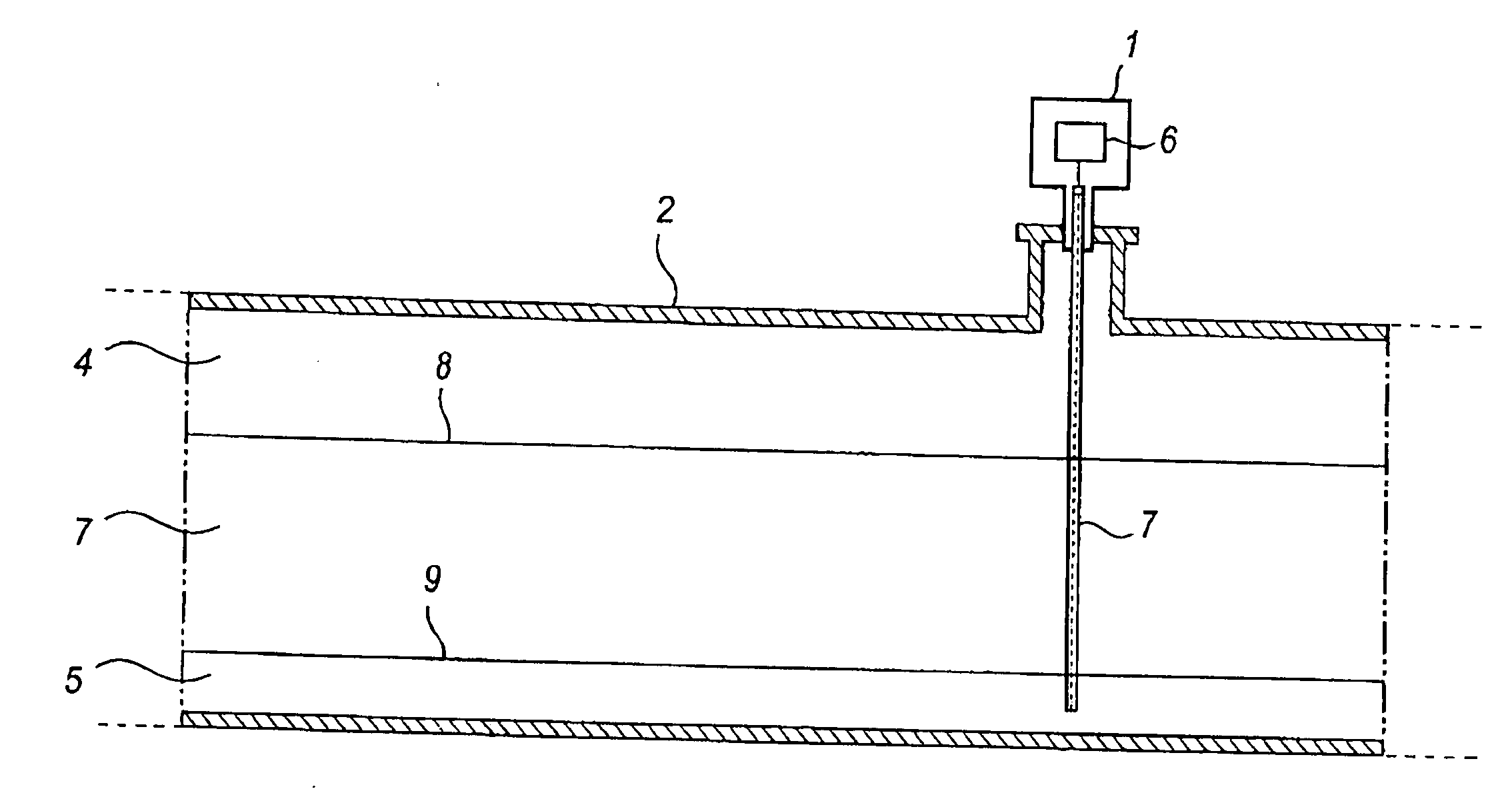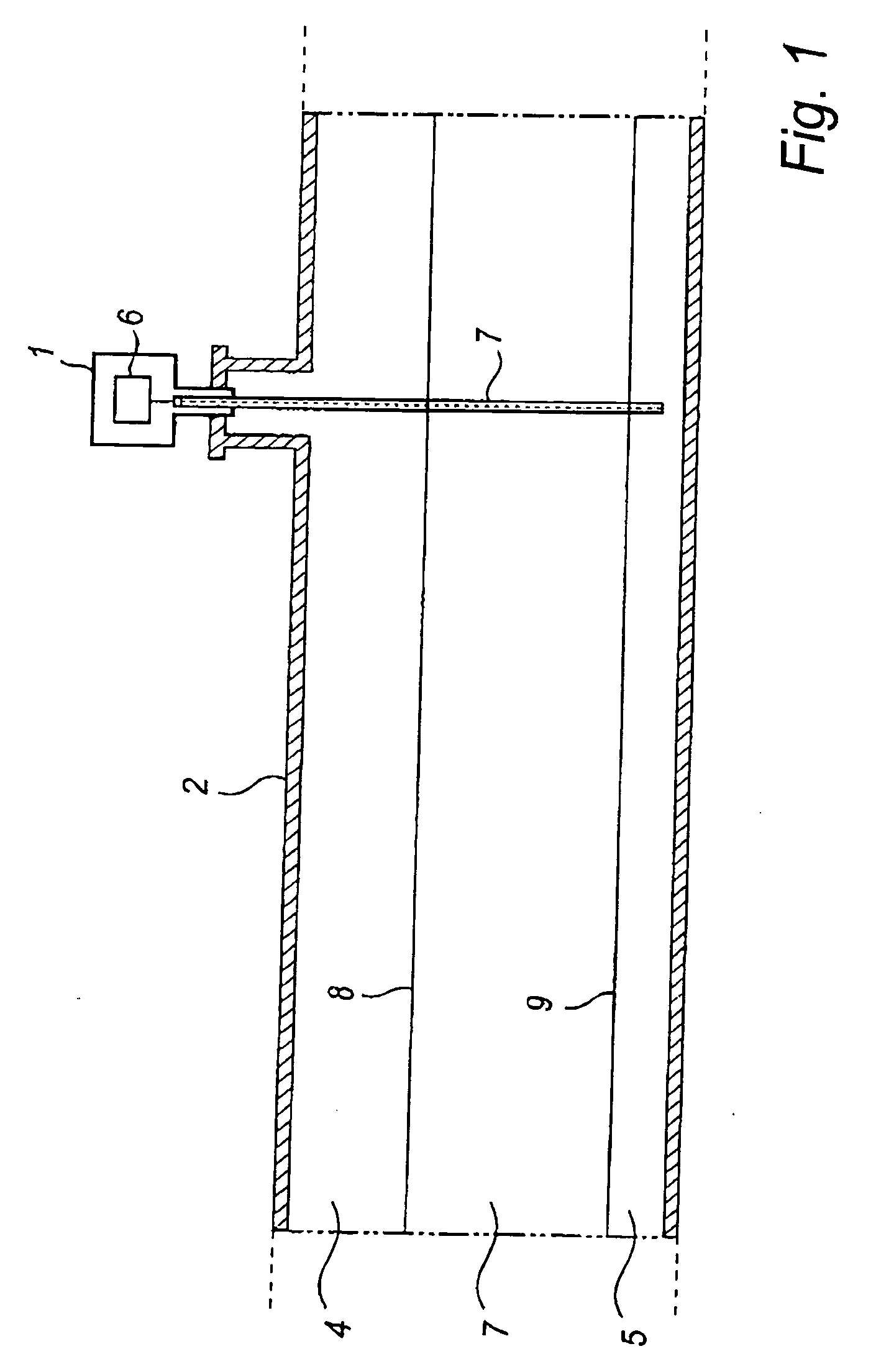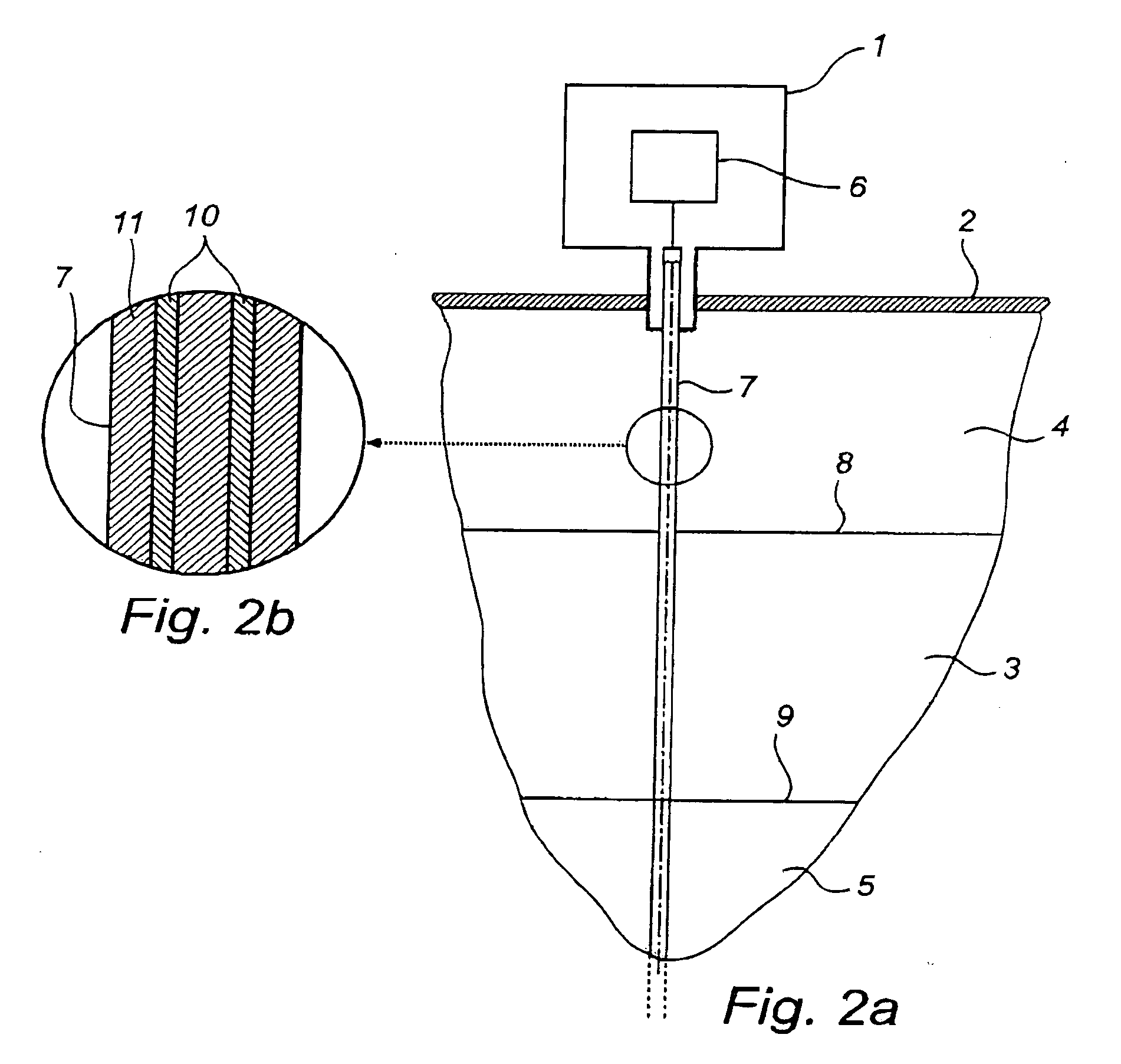Radar level gauge system and transmission line probe for use in such a system
a technology of transmission line and level gauge, which is applied in the direction of using reradiation, measuring devices, radio wave reradiation/reflection, etc., can solve the problems of insufficient accuracy, insufficient interface echo, and inability to use coaxial lines in very clean liquids, so as to improve accuracy, accurately measure several levels, and improve accuracy
- Summary
- Abstract
- Description
- Claims
- Application Information
AI Technical Summary
Benefits of technology
Problems solved by technology
Method used
Image
Examples
Embodiment Construction
[0026] In the present description, like reference numerals identify corresponding or similar structures and components.
[0027] In FIG. 1, an example of a radar level gauge system according to the present invention is shown. Here, a radar level gauge system 1 has been installed onto a tank 2. Inside of the tank 2, content 3 has been deposited, such as oil. When the tank 2 is not completely full, the top part of the tank will comprise a layer of gas, and typically air 4. A small amount of water is often present in a tank (due to condensation), and this layer of water 5 can be seen on the bottom of tank 2. However, it is to be appreciated by the skilled addressee that the present radar level gauge system may be used for many other types of tanks and containers, and for many other types of filling materials.
[0028] The radar level gauge system 1 further comprises a transmitter and a receiver, and preferably a transceiver 6 consisting of a combined transmitter and receiver, arranged to t...
PUM
 Login to View More
Login to View More Abstract
Description
Claims
Application Information
 Login to View More
Login to View More - R&D
- Intellectual Property
- Life Sciences
- Materials
- Tech Scout
- Unparalleled Data Quality
- Higher Quality Content
- 60% Fewer Hallucinations
Browse by: Latest US Patents, China's latest patents, Technical Efficacy Thesaurus, Application Domain, Technology Topic, Popular Technical Reports.
© 2025 PatSnap. All rights reserved.Legal|Privacy policy|Modern Slavery Act Transparency Statement|Sitemap|About US| Contact US: help@patsnap.com



